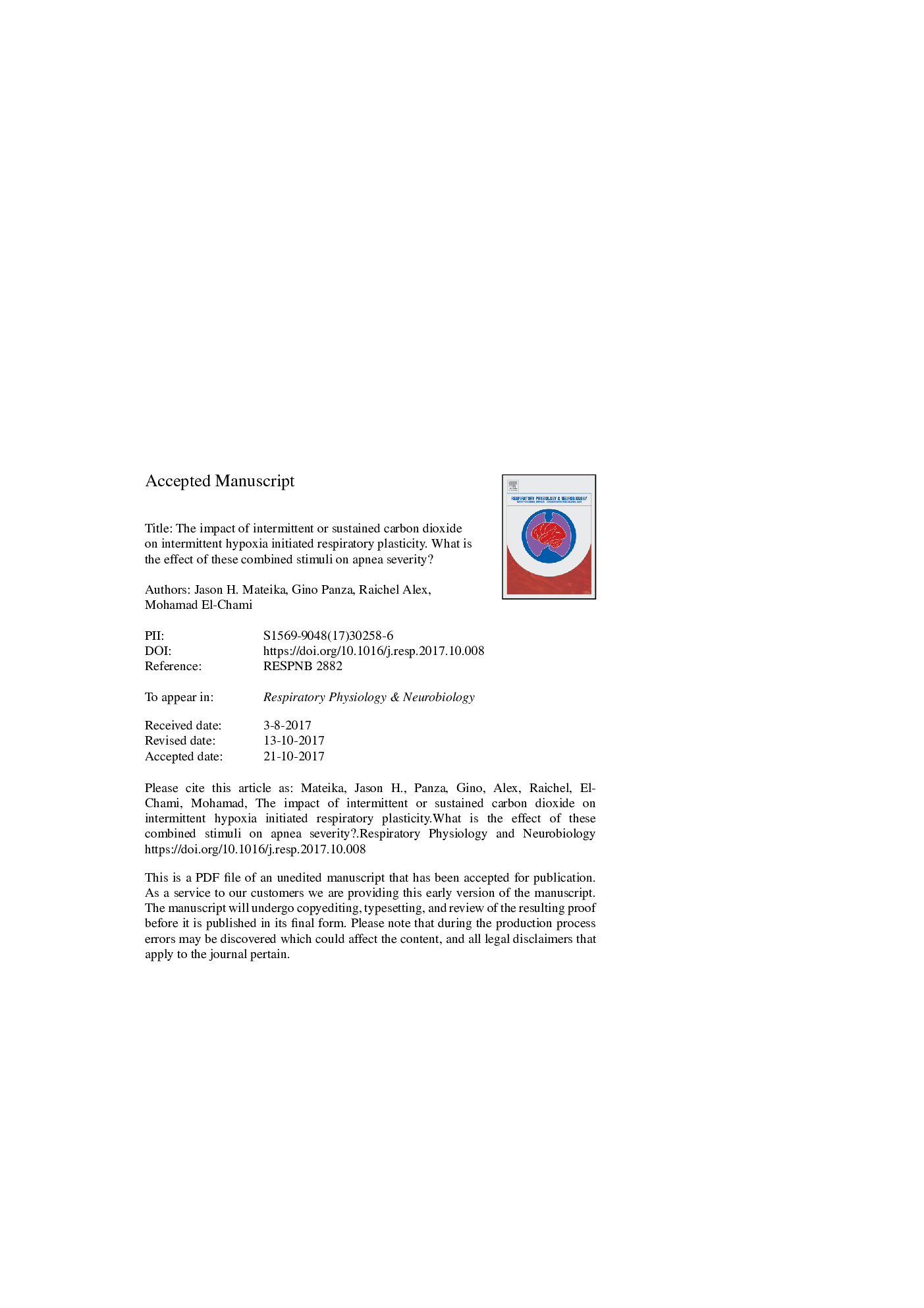| Article ID | Journal | Published Year | Pages | File Type |
|---|---|---|---|---|
| 8951023 | Respiratory Physiology & Neurobiology | 2018 | 39 Pages |
Abstract
The following review explores the effect that intermittent or sustained hypercapnia coupled to intermittent hypoxia has on respiratory plasticity. The review explores published work which suggests that intermittent hypercapnia leads to long-term depression of respiration when administered in isolation and prevents the initiation of long-term facilitation when administered in combination with intermittent hypoxia. The review also explores the impact that sustained hypercapnia alone and in combination with intermittent hypoxia has on the magnitude of long-term facilitation. After exploring the outcomes linked to intermittent hypoxia/hypercapnia and intermittent hypoxia/sustained hypercapnia the translational relevance of the outcomes as it relates to breathing stability during sleep is addressed. The likelihood that naturally induced cycles of intermittent hypoxia, coupled to oscillations in carbon dioxide that range between hypocapnia and hypercapnia, do not initiate long-term facilitation is addressed. Moreover, the conditions under which intermittent hypoxia/sustained hypercapnia could serve to improve breathing stability and mitigate co-morbidities associated with sleep apnea are considered.
Keywords
Related Topics
Life Sciences
Biochemistry, Genetics and Molecular Biology
Physiology
Authors
Jason H. Mateika, Gino Panza, Raichel Alex, Mohamad El-Chami,
